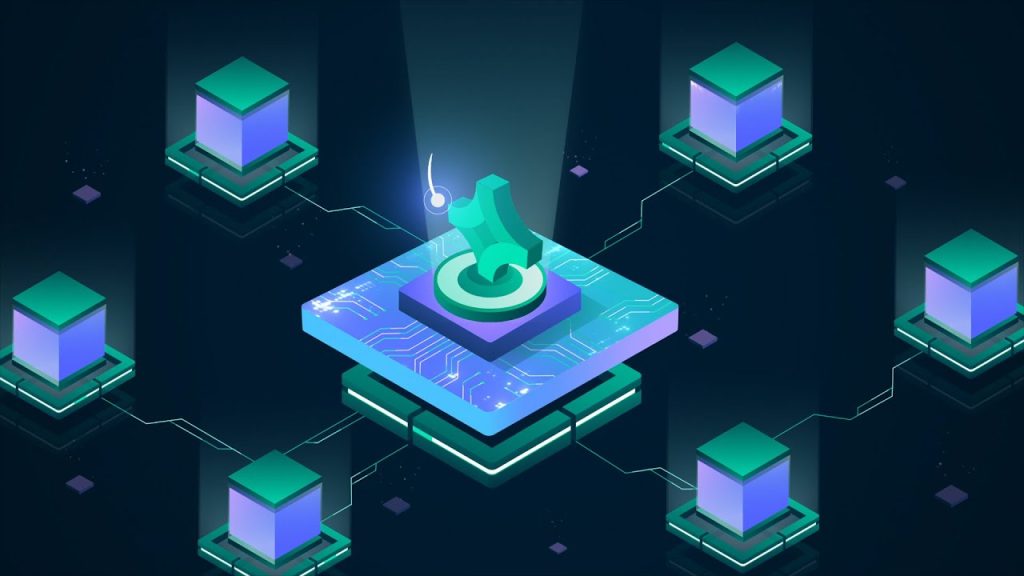Introduction
In today’s fast-paced business environment, organizations are increasingly leveraging technology to streamline operations, reduce inefficiencies, and maintain competitiveness. Enterprise Resource Planning (ERP) systems have long been the backbone of organizational management, facilitating the seamless integration of core business processes such as finance, HR, procurement, and supply chain management. However, despite their effectiveness, traditional ERP systems often suffer from limitations related to transparency, data security, and interoperability, particularly in complex supply chain operations.
As blockchain technology continues to gain traction, its potential to overcome these limitations and optimize business processes has become more apparent. Blockchain’s key features—decentralization, immutability, transparency, and traceability—make it an ideal complement to ERP systems. By integrating blockchain into traditional ERP systems, businesses can enhance supply chain visibility, improve cross-departmental collaboration, and ensure greater data security.
This article explores how blockchain technology can be effectively integrated with ERP systems to optimize supply chain management and improve interdepartmental coordination. We will also delve into the challenges, benefits, and strategies for successful integration.
1. Understanding ERP Systems and Blockchain Technology
1.1 What is an ERP System?
Enterprise Resource Planning (ERP) systems are comprehensive software platforms used by organizations to manage and integrate the core business processes. They typically provide a unified system for functions such as accounting, procurement, inventory management, sales, customer relationship management (CRM), and human resources (HR).
Key features of ERP systems include:
- Centralized Database: All departments and business functions share a single database for real-time access to data.
- Automation of Processes: Routine business processes such as invoicing, inventory updates, and payroll processing are automated.
- Data Integration: Information is seamlessly shared across different departments and functions to improve collaboration and decision-making.
- Real-time Reporting: ERPs provide businesses with real-time insights into key metrics such as cash flow, sales performance, and inventory levels.
1.2 What is Blockchain Technology?
Blockchain is a decentralized and distributed digital ledger technology that enables secure, transparent, and tamper-resistant transactions. Unlike traditional centralized systems, blockchain operates on a network of computers (nodes), where each participant has a copy of the ledger. Each transaction is recorded in a “block,” and these blocks are linked together (forming a “chain”), ensuring the integrity of data over time.
Key features of blockchain technology include:
- Decentralization: No single entity controls the blockchain; it is distributed across a network of nodes.
- Immutability: Once data is recorded on the blockchain, it cannot be altered or deleted without consensus from the network.
- Transparency: All transactions are visible to authorized participants, enhancing trust and accountability.
- Security: Blockchain uses cryptographic techniques to secure data, making it highly resistant to hacking or unauthorized modifications.
1.3 Why Combine Blockchain and ERP?
Traditional ERP systems, while powerful, are often constrained by the challenges of ensuring data integrity, transparency, and security across the entire supply chain. Blockchain’s decentralized and immutable nature can help overcome these limitations by providing enhanced visibility, security, and traceability to ERP systems.
The integration of blockchain with ERP systems can:
- Improve data transparency and provide an auditable trail of transactions.
- Enhance supply chain traceability, allowing businesses to monitor goods from origin to destination.
- Enable automated contract execution through smart contracts, improving process efficiency.
- Improve cross-department collaboration by providing a single, trusted source of truth.
2. Benefits of Integrating Blockchain with ERP Systems
2.1 Enhanced Transparency and Traceability
One of the major challenges in supply chain management is the lack of visibility across the various stages of the supply chain. ERP systems typically capture data from various departments, but that data may not be easily accessible to external partners, such as suppliers or customers.
Blockchain technology offers a solution to this problem. By recording every transaction or movement of goods on a transparent, immutable ledger, blockchain provides real-time traceability across the entire supply chain. This not only ensures that each participant has access to the same information but also helps identify bottlenecks or inefficiencies in the supply chain.
For example, blockchain can track the journey of a product from raw material sourcing, through production, to final delivery. This transparency allows businesses to quickly identify issues such as delays, defects, or discrepancies, improving decision-making and response times.
2.2 Improved Data Security and Integrity
Data security is a key concern for businesses, especially when sensitive or proprietary information is involved. ERP systems, though secure, rely on centralized databases that can become targets for cyberattacks, leading to potential data breaches or tampering.
Blockchain enhances the security and integrity of ERP systems by providing an additional layer of protection. Since data on the blockchain is cryptographically secured and immutable, it is nearly impossible for unauthorized parties to alter or delete records. This significantly reduces the risk of fraud, data breaches, or tampering with transaction records.
Furthermore, blockchain can also enhance the security of sensitive business documents, such as contracts, invoices, and purchase orders, by storing them in a decentralized ledger with encryption, ensuring that only authorized parties can access the information.
2.3 Streamlined Processes with Smart Contracts
Smart contracts are self-executing contracts with the terms of the agreement directly written into code. When integrated with ERP systems, smart contracts can automate various processes, such as payments, order fulfillment, and inventory management.
For example, when a supplier delivers goods to a business, the ERP system could automatically trigger a smart contract to process the payment once the delivery is confirmed on the blockchain. This eliminates the need for manual intervention, reducing administrative overhead and minimizing the potential for human error.
Smart contracts also improve trust between parties, as they automatically execute the terms of the agreement without the need for intermediaries, such as banks or third-party administrators.
2.4 Reduced Operational Costs
Integrating blockchain with ERP systems can help businesses reduce operational costs in several ways:
- Eliminating intermediaries: By automating processes and using blockchain for secure transactions, businesses can eliminate the need for intermediaries such as banks, auditors, or payment processors.
- Reducing fraud and errors: Blockchain’s tamper-proof nature reduces the risk of fraud or accounting errors, saving businesses time and money spent on dispute resolution and auditing.
- Optimizing supply chain efficiency: Real-time tracking and transparent data sharing can help businesses optimize their supply chains, reducing delays and ensuring the timely delivery of goods.

3. Key Challenges in Integrating Blockchain with ERP Systems
While the integration of blockchain and ERP systems offers numerous benefits, it also presents several challenges:
3.1 Technological Complexity
Integrating blockchain technology with existing ERP systems can be complex and resource-intensive. Blockchain is a relatively new technology, and many organizations may lack the internal expertise or infrastructure to implement it successfully. Additionally, blockchain networks may not always be compatible with existing ERP software, requiring customization or new development efforts.
3.2 Data Privacy and Compliance Concerns
While blockchain’s transparency is a major advantage, it also raises concerns about data privacy, particularly when dealing with sensitive business or customer information. Organizations must ensure that they comply with data protection regulations, such as GDPR, when using blockchain. This may require implementing privacy-focused blockchain solutions, such as permissioned blockchains or privacy-enhancing technologies like zero-knowledge proofs.
3.3 Scalability
Blockchain technology, particularly public blockchains like Ethereum, has faced scalability challenges, such as slow transaction speeds and high costs during periods of network congestion. For large organizations with high transaction volumes, these limitations could hinder the efficiency of blockchain-ERP integration. Businesses must carefully assess the scalability requirements of their ERP systems and choose blockchain platforms that can handle large-scale operations.
3.4 Regulatory Uncertainty
Blockchain and cryptocurrencies are still in the early stages of regulatory development in many countries. While some jurisdictions have implemented clear guidelines, others remain uncertain about how to regulate blockchain technology. Businesses integrating blockchain into their ERP systems need to stay abreast of evolving regulatory landscapes and ensure compliance with local laws.
4. Best Practices for Integrating Blockchain with ERP Systems
4.1 Conduct a Needs Assessment
Before integrating blockchain with an ERP system, organizations should conduct a thorough needs assessment to identify the areas of the business that would benefit most from blockchain technology. This includes supply chain management, contract management, and financial transactions. By understanding the specific pain points, businesses can prioritize blockchain implementation in the areas that offer the greatest potential for improvement.
4.2 Choose the Right Blockchain Platform
Not all blockchains are suitable for ERP integration. Depending on the business’s needs, organizations can choose between public, private, or consortium blockchains. Private blockchains may offer better control and privacy, while public blockchains offer greater decentralization and transparency. Businesses should carefully evaluate blockchain platforms such as Hyperledger Fabric, Ethereum, and R3 Corda to determine which best meets their requirements.
4.3 Collaborate with Experts
Blockchain integration can be a complex process, and it’s important to collaborate with blockchain developers and consultants who have experience in integrating blockchain with ERP systems. Working with experts can ensure a smoother integration process and help businesses avoid common pitfalls.
4.4 Start Small and Scale Gradually
To mitigate risks and reduce the complexity of integration, businesses should consider starting with a small pilot project before rolling out blockchain integration across the entire organization. This allows companies to test the technology, measure its effectiveness, and make adjustments before scaling up.
Conclusion
Integrating blockchain technology with traditional ERP systems offers significant potential for optimizing supply chain management, improving cross-departmental coordination, and enhancing operational efficiency. By providing greater transparency, security, and automation,
blockchain can address many of the limitations of existing ERP systems, enabling businesses to unlock new opportunities and drive innovation.
However, successful integration requires careful planning, technical expertise, and a clear understanding of the challenges involved. By following best practices and strategically implementing blockchain, organizations can realize the full potential of both ERP and blockchain technologies to create more resilient, efficient, and transparent business operations.
Ultimately, as blockchain technology continues to evolve, its integration with ERP systems will likely become an essential part of the digital transformation journey for businesses worldwide.

















































